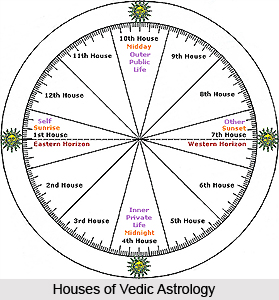 Vedic Astrology is an ancient Indian science explaining movements of the planet and its positions with regards to time and effect on all entities on earth. Astrology is a Vedanga - a part of Vedas. Understanding of astrology was in its infancy in the Vedic period. It included gathering knowledge on the planets, their movements and their location. Earlier Vedic astrology was only based on the planetary movements but later on it included zodiac signs also.
Vedic Astrology is an ancient Indian science explaining movements of the planet and its positions with regards to time and effect on all entities on earth. Astrology is a Vedanga - a part of Vedas. Understanding of astrology was in its infancy in the Vedic period. It included gathering knowledge on the planets, their movements and their location. Earlier Vedic astrology was only based on the planetary movements but later on it included zodiac signs also.There are 27 constellations made up of 12 zodiac signs, 9 planets and 12 houses. Depending on when a person is born, the 12 signs are distributed among the 12 houses and 9 planets are placed in various houses. The visual representation of the signs and planets is called a horoscope chart. Vedic Astrology is inferring the meaning of these arrangements.
Types of Vedic Astrology
Vedic Astrology (Jyotisha) has Siddhanta, Samhita and Hora as its three main branches:
For more, visit the link below: